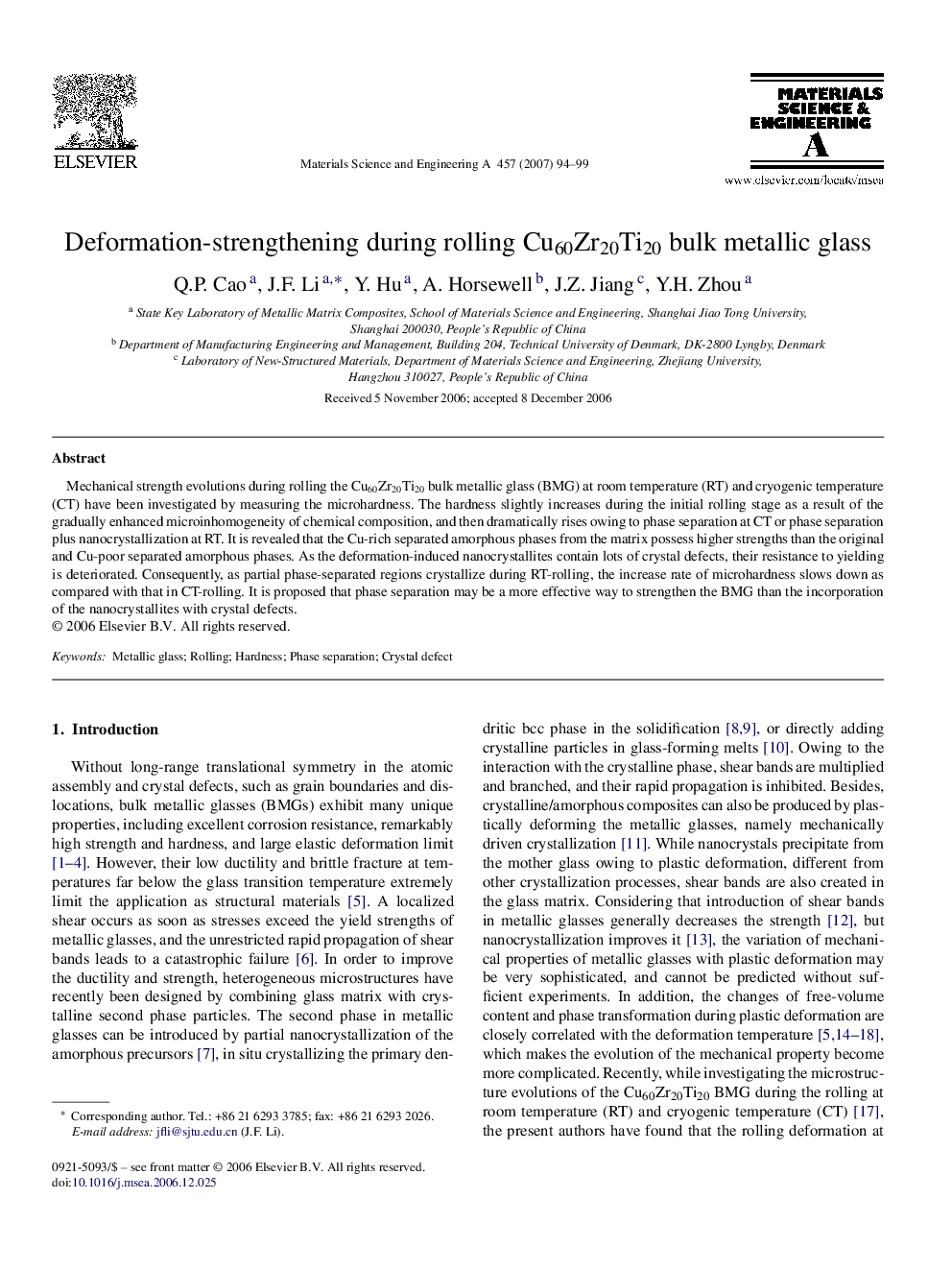| Article ID | Journal | Published Year | Pages | File Type |
|---|---|---|---|---|
| 1584180 | Materials Science and Engineering: A | 2007 | 6 Pages |
Mechanical strength evolutions during rolling the Cu60Zr20Ti20 bulk metallic glass (BMG) at room temperature (RT) and cryogenic temperature (CT) have been investigated by measuring the microhardness. The hardness slightly increases during the initial rolling stage as a result of the gradually enhanced microinhomogeneity of chemical composition, and then dramatically rises owing to phase separation at CT or phase separation plus nanocrystallization at RT. It is revealed that the Cu-rich separated amorphous phases from the matrix possess higher strengths than the original and Cu-poor separated amorphous phases. As the deformation-induced nanocrystallites contain lots of crystal defects, their resistance to yielding is deteriorated. Consequently, as partial phase-separated regions crystallize during RT-rolling, the increase rate of microhardness slows down as compared with that in CT-rolling. It is proposed that phase separation may be a more effective way to strengthen the BMG than the incorporation of the nanocrystallites with crystal defects.
